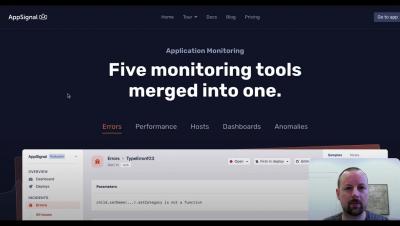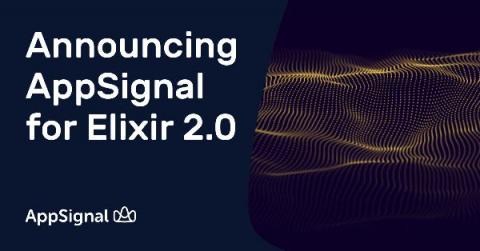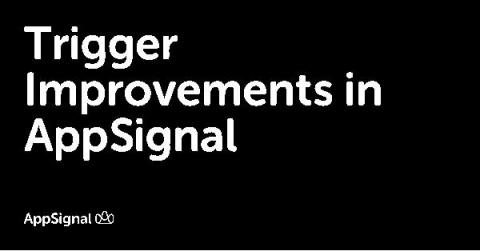Operations | Monitoring | ITSM | DevOps | Cloud
AppSignal
Building a Multi-tenant Ruby on Rails App With Subdomains
According to a definition of multitenancy, when an app serves multiple tenants, it means that there are a few groups of users who share common access to the software instance. An excellent example of an app that supports multitenancy is the Jira platform, where each company has its subdomain to access the software, for example, mycompany.atlassian.net.
Fast & Curious: Find and Fix Slow Queries & API Requests
AppSignal was built because we were tired of slow and clumsy monitoring setups. Instead, we built monitoring that’s easy yet powerful - an intuitive interface enables you to figure out what’s happening in no time. Today, our team made finding slow events effortless. We’ve fully overhauled our slow events feature, helping developers to quickly find and fix slow queries and API requests.
Server-side Rendering in JavaScript: A Modern Approach
Let’s talk about SPAs. It all starts from a blank page which is subsequently filled with HTML and JavaScript. If we take PHP pages as an example, they already come bundled with the server, which is an advantage in terms of performance, right? For situations like these, server-side rendering frameworks (such as Next.js) come to the rescue. They process the code on the server-side to pre-fill the HTML result page with something (if not the whole page) before it reaches the browser.
Announcing AppSignal for Elixir 2.0
In order to be the best 5-in-1 APM tool for Elixir, we’re constantly working on improving how AppSignal works and integrates with your app. With AppSignal by your side, you’ll have a clear overview of your app’s performance after an installation process that we keep fast and simple. As a first APM for Elixir out there, we’ve always focused on doing all the heavy lifting and providing Elixir developers with a service we’d love to use ourselves.
Triggers in AppSignal: Already Powerful - Now Easy To Set Up
Setting up triggers within AppSignal is a powerful way to discover that the bits started hitting the fan. You can use triggers to get an alert if an error rate is higher than 1%, your server runs out of memory, or even if your hourly login drops to zero. Our latest update makes the creation of triggers much easier.
JavaScript Internals: Garbage Collection
Garbage collection (GC) is a very important process for all programming languages, whether it’s done manually (in low-level languages like C), or automatically. The curious thing is that most of us barely stop to think about how JavaScript — which is a programming language, and hence, needs to GC — does the trick. Like the majority of high-level languages, JavaScript allocates its objects and values to memory and releases them when they’re no longer needed. But, how?
AppSignal is Free for Open-Source Software & "For Good" Projects
Whether you write code to save the bees, build the latest CMS, or teach others to become a developer: we’ve got your back. We’ve always offered AppSignal for free to maintainers and do-gooders who asked, such as Elixir School, Code::Stats and the MEANS Database. Starting today, we want to spread the word to all open-source maintainers and volunteer organizations that AppSignal is 100% free for them.
Capabilities of Elixir's Logger
Logs are an important part of your application and logging shouldn’t be one of the last things you think of. You should configure your log system, formatter, and style as soon as you start the development of your app. Also, do your best to document the process and share how it works with the rest of your team. In this article, we’re going to demonstrate how logs work in Elixir. We’ll jump into Elixir’s Logger module, which brings a lot of power to logging features.
Launching AppSignal Monitoring for Node.js 1.0
Do you know how many errors your Node.js application had last week? How many users were affected? Which servers were high on CPU/Memory/Disk? If you do know, how many different tools did you have to install, and how many hours you’ve spent configuring all those tools? AppSignal is here to change the way you monitor your apps and simplify your life as a developer. Today, we officially launch the 1.0 version of @appsignal/node.js.











